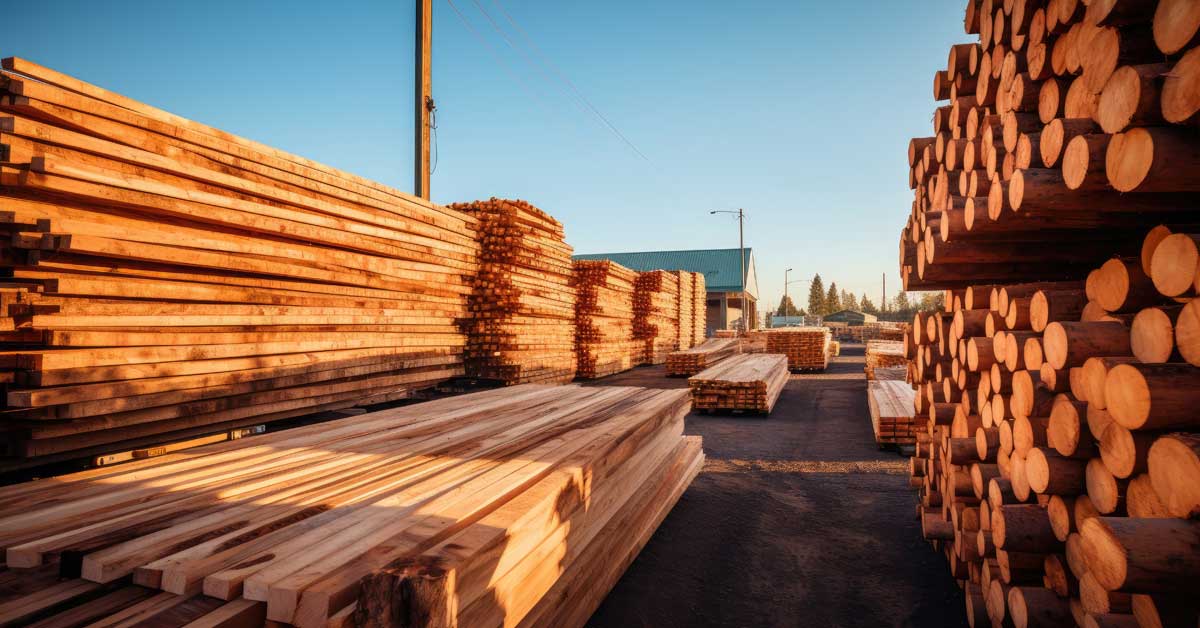2 min read
2024 Outlook on Russian Exports in the Lumber Market
ResourceWise
:
Dec 1, 2023 12:00:00 AM

Russian exports in the global lumber market have changed substantially as their war against Ukraine continues. With the huge shift in exports from the country, what does the start of 2024 look like for wood markets?
Major Changes in Russian Lumber Export Prices
Once known as the global leader of softwood lumber exports, the tide has certainly shifted for Russia. The country’s invasion of Ukraine has yielded lofty consequences on a global economic scale. A considerable amount of these consequences comes in the forest products market.
Major countries, particularly across the EU, have banned all exports coming out of Russia. According to ResourceWise data, Russian mills had anticipated a shift to China and other markets to compensate for the EU ban.
However, these lost shipments have not moved to these alternative markets. Other factors, such as China’s slowing economy, have drastically dropped demand. This has ultimately led to a marked decrease in total Russian exports over the last two years.
Because of these countries refusing any Russian lumber, the price has seen a significant drop as well. Prices have decreased by about 50% from their record highs in early 2022 (before the Ukrainian invasion) to today (almost 2 years later).
With so many forest products and nowhere to send them, it is unclear how the market will respond. If the conflict carries on, we’ll certainly see more disruptions in historical pricing in Russia and throughout the world.
Related: China, Russia, and the Uncertain State of Wood Markets
Market Demand and Supply Dynamics
Despite the change in Russian exports and pricing, demand has surged upward for wood products and materials in many regions. One of the key factors contributing to the rise in lumber export prices is the rise in global construction activities.
As countries further recover from the economic downturn caused by the pandemic, there has been a substantial increase in construction projects worldwide. September data from the Institute for Supply Management (ISM) showed ongoing increases in several areas of construction. This includes exports and imports as well as backlogged orders. The data suggests ongoing demand that will require additional factors (such as more employees) to catch up.
Changes in market dynamics, such as shifting trade policies and trade agreements, have also influenced lumber export prices. Trade tensions between some countries have led to the imposition of tariffs and trade barriers. Unsurprisingly, these tensions have affected the supply and pricing of lumber in the global market.
Competitive Landscape: Who's Covering for Russia?
Russian lumber faces competition from other major lumber-producing countries and regions such as Canada, the United States, and Scandinavia. These regions each have their own strengths and advantages in terms of lumber production and export capabilities.
Canada, for example, is known for its vast forest resources and high-quality softwood lumber. The United States is a significant player in the lumber market, with its production mainly focused on domestic consumption. Scandinavian countries, on the other hand, are recognized for their sustainable forestry practices and environmentally friendly lumber.
Although, many of these markets have seen their share of challenges in 2023. Canada’s record-setting wildfire season has left enormous swarths of forestlands devastated. In turn, this has made many investors nervous about counting on Canadian lumber.
With Russian exports turned away from the table and Canada’s instability, attention has turned to the US. The US typically relies on sources like Canada to accommodate its own domestic demand. But the country has looked elsewhere for the supply it needs.
Related: Canada’s Dwindling Lumber Supply Can't Cover US Demand
The same issues between Canada and the US are occurring for countries that once relied on Russian exports. Russia was once an assumed resource to fuel European and Chinese demand (among others). However, current circumstances have restructured many of these once-strong market relationships.
Other countries like Finland and even Australia have risen to fill in the gaps caused by Russia. Similarly, Brazil has been positioning itself to become a larger player in the global wood products market as well.
Learn More About the Changing Role of Russia's Lumber Market
With the market movements we’ve seen in 2023, now is the time to think about what’s coming in 2024. Stick with ResourceWise to get the latest developments in the Russian and global wood markets.





